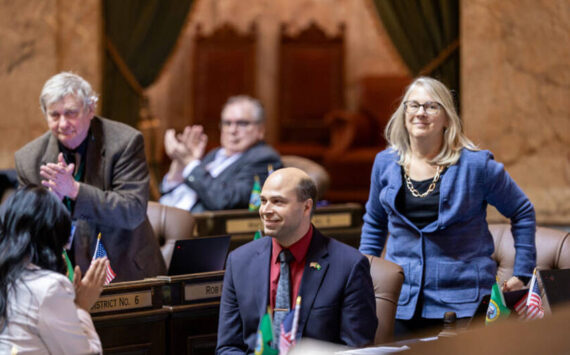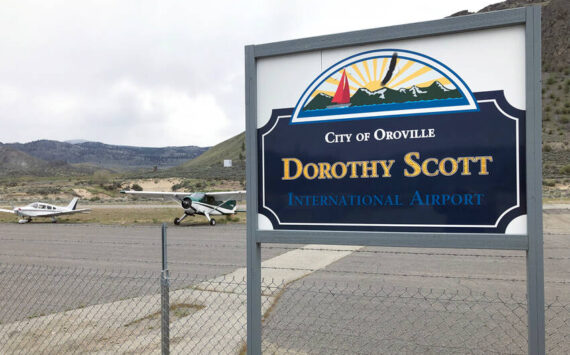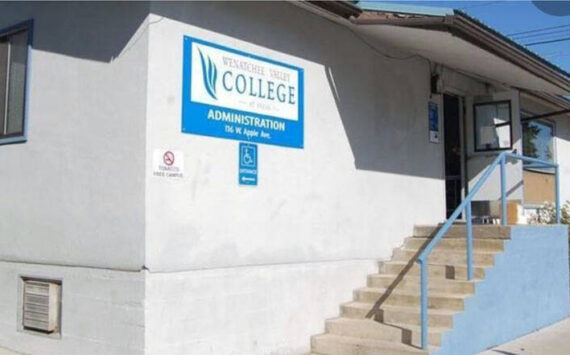- TONASKET – Is the glass half full, or half empty?
- North Valley Hospital District CEO Linda Michel seems to see that right now, it’s both. While the hospital has improved its overall financial standing in the two years since she arrived, the need to get the warrant level (low-interest loans from the county for operating expenses) reduced led her to delve more deeply into each department’s financial performance than had been done previously. Though NVH was on track last winter to have its warrants paid off by its target date of 2014, a recent rise in the warrant level made the need for that analysis more pressing.
- “Our overall thinking is that we need to be out of debt by the end of 2014,” Michel said. “We’re going to find a way to do that. It means examining every nook and cranny of what we do, and then doing what’s needed.
- “We’re obviously not always about the revenue. But we have to make sure that the departments that do make money can balance out the ones that don’t. And if something isn’t a good fit for us, we may need to make some hard decisions.”
- Michel said that there hadn’t been a history of breaking down each department’s financial performance, and she felt the need to go through each department to determine where changes needed to be made.
- She presented her results at the Thursday, June 28, meeting of the NVH Board of Commissioners, along with some recommendations on what needed to be done to further solidify the district’s financial footing.
- Faced with the avalanche of information, the Board of Commissioners didn’t take any action on Michel’s recommendations, though they pledged their support for her efforts after discussing the issues.
- “It’s going to be quite a process of looking at every department,” she said. “We need to come up with some recommendations and make sure that we’re living day to day on what we make here and not depending on the county. We want our own bank account.”
Some departments in the black
- First, the good news.
- The emergency room, with contracted services through Coast-to-Coast Health Care, has a projected profit of $1.1 million after netting $812,000 last year.
- Rehabilitation services, due primarily to reduced expenditures, is on track to more than double its profit from $318,000 to a projected $750,000.
- Laboratory profits look to be comparable to last year’s $318,000 despite a projected decrease in the number of procedures from 42,400 to 36,800.
- Finally, the radiology department’s net profit, as currently projected, should be in the $547,000, down from $850,000 last year.
- Michel’s recommendations included emphasizing marketing for all divisions; continuing NVH’s relationship with Coast-to-Coast for emergency room services; moving Rehabilitation Services into the Oroville clinic.
- “I think we they all need to be in one spot,” she said. “And I think we should take two or three rooms on the southwest end of … Extended Care… and make a true rehab facility. We’ve got the staff; we’ve got everything we need.”
- Such a facility would fill a need for patients that weren’t traditional extended care patients, for example a teenage car accident victim, that may not typically be comfortable in a nursing home setting.
- “If they need to go to the nursing home to rehab, they may not want to go there,” Michel said. “They may not want to go there.”
- Currently the nearest such rehab facility is in Spokane.
- The CEO said that NVH is working on integrating its systems with Wenatchee Valley, with the intent of taking on that lab’s blood testing.
- “They have their own lab right now, and they’re going to close that,” Michel said. “We’re really excited about this. It’s something (Director of Ancillary Services) Noreen Olma has been wanting for years and years, and (until now) it just hasn’t happened.”
- Michel added that she would like to evaluate the mammography program and make some process corrections to the scheduling to better accommodate both providers and patients.
Bigger issues
- Larger issues that may involve more significant changes involve the hospital’s participation in Caribou Trail Orothopedics and the performance of the Tonasket and Oroville clinics.
- Caribou Trail is an LLC formed by the hospitals in Tonasket, Omak, Brewster, Chelan and Grand Coulee. The hospitals pay the Caribou Trail doctors set fees for their services, which vary depending on what the service is. The problem NVH has faced is that 31 percent of those patients either can’t or don’t pay for their services. A third are written off as bad debt or charity care.
- NVH brought in $163,000 of net revenue, but that didn’t include the use of hospital staff, supplies or space. Furthermore, each of the hospitals other than Omak’s Mid-Valley is seeing a significant decrease in patients compared to last year.
- “Caribou Trail bills the fee, and we pay it regardless of whether we get paid or not,” Michel said.
- One task set before Michel and the board will be to determine whether or not to remain part of the Caribou Trail arrangement, at least as it currently exists. NVH could withdraw from Caribou Trail and sell off its percentage of the LLC to one or more of the other member hospitals on 60 days notice.
- The medical clinics, in the short term, pose the biggest problem on the financial end. That will be partially alleviated by completion of the hospital’s second floor construction project, which will allow the Tonasket Family Medical Clinic, the VA Clinic and other specialties to move upstairs where there is space to operate.
- Currently, the Tonasket clinic is unable to see enough patients to cover its expenses, but hasn’t the space to accommodate more. The Oroville clinic hasn’t fared any better. In 2011, Tonasket lost $417,000, while Oroville was $295,000 in the red. In 2012 they are projected to lose $389,000 and $395,000, respectively, and with a combined estimated bad debt load of nearly $300,000 stand to finish the year over $1 million in the red.
- “There will be much more space,” in Tonasket, Michel said. “We need more volume, and right now we can’t reach those volumes.”
- The second floor construction is on schedule for completion in late August, which will alleviate the space issues. The Tonasket clinic has been operating shorthanded, and Michel said that the hospital is actively recruiting to fill that position with an eye toward getting the clinic in its new space.
- “The other part of it is our efficiency in both clinics,” Michel said. “We’re working on reorganizing our patient flow into a new model so that we’re able to see more patients without sacrificing anything in terms of patient care and patient safety, which is always our number one priority.”
- Michel said that she has held off on marketing the clinics to this point because, until the second floor construction is done and the in-house changes are implemented, they couldn’t realistically accept the number of patients it would take to approach break-even numbers.
- “We can’t market the clinics until they’re operating smoothly,” she said.
- The VA Clinic poses its own set of issues, though it has been successful on most every level in its first year. NVH gets reimbursed by the Veterans Administration for each person that it keeps enrolled in the program. Thus far that has meant a combined 1125 visits and an enrollment of 426 vets in Oroville and Tonasket combined, a number that
is expected to grow. - The most critical aspect is having a VA certified provider.
- “We’re going to have VA provider that’s going to come three days this month,” Michel said. “Then he’ll give us dates for August and September, or until we find a new (permanent) provider.”
- Also, the Veterans Administration had not been informing patients of their need for annual physicals in order to stay enrolled in the program, so those involved with the VA Clinic have, through direct means and a publicity blitz, been trying to get the word out so that enrollment in the program doesn’t drop by unintentional attrition.
- The biggest news nationwide the day of the June 28 board meeting was the U.S. Supreme Court’s decision to uphold most of the Patient Protection and Affordable Care Act – a.k.a. Obamacare – but that didn’t make much of a ripple with the NVH staff and wasn’t even mentioned at the board meeting.
- “We’re so used to regulations changing, we’ve gotten to be pretty innovative,” Michel said. “Such as the changes to Medicare this year. Plus, this state has already done quite a lot. So our eyes are pretty wide open, regardless of what happens.”
- The NVH Board of Commissioners next meets Thursday, July 12, in the hospital board room.




